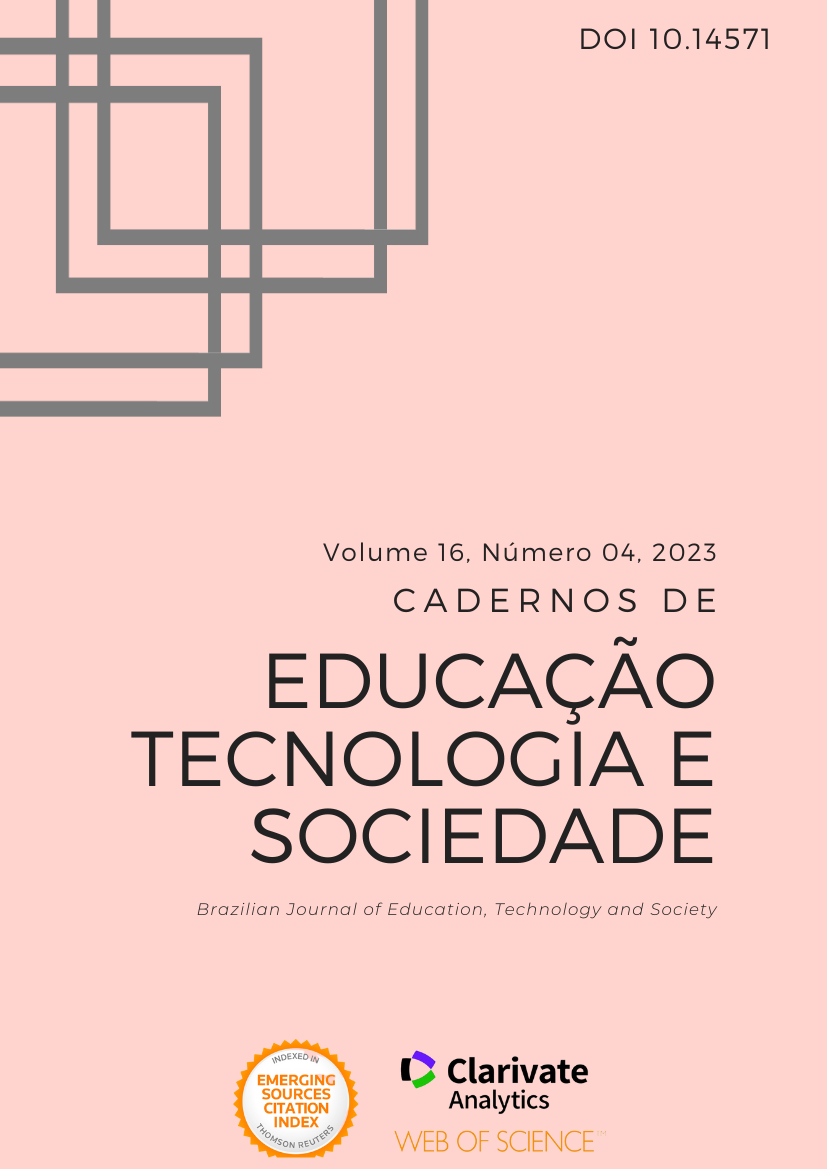Avaliando Modelos de Aprendizado de Máquina para Eficiência de Serviços de Saúde
DOI:
https://doi.org/10.14571/brajets.v16.n4.1280-1289Resumo
O artigo é dedicado ao problema de avaliação da qualidade dos cuidados de saúde utilizando algoritmos de aprendizagem de máquina. Propõe-se avaliar o termo categórico “qualidade dos cuidados de saúde” como variável discreta com base em dados sobre o resultado do tratamento, fornecidos por um dos principais hospitais da Rússia. É fornecida uma análise preliminar das variáveis dependentes e explicativas. São analisadas as estatísticas dos resultados do tratamento em função da idade e sexo dos pacientes. A necessidade de redução do conjunto de dados inicial é justificada. São propostas as formas de correção do desequilíbrio no conjunto de dados, como SMOTE e Tomek Links. Com base nos dados corrigidos, foram projetados modelos logit ordenados e Random Forest. É apresentada a análise comparativa de vários modelos. As desvantagens de cada modelo são explicadas. O modelo logit ordenado em dados balanceados permitiu determinar os fatores que têm maior impacto positivo no resultado do tratamento, bem como o modelo Random Forest tornou as previsões tão precisas quanto possível. Com base nos resultados obtidos, são feitas recomendações para melhorar a eficiência dos cuidados de saúde no âmbito de um determinado hospital.
Referências
Cardenas, C. A. (2023). Sarcomas:“A Comprehensive Review of Classification, Diagnosis, Treatment, and Psycho-social Aspects. Clin Oncol Case Rep 6, 6, 2-6.
Chawla N.V., Bowyer K.W., Hall L.O., W.P. (2002). Kegelmeyer SMOTE: Synthetic Minority Over-sampling Tech-nique. Journal of Artificial Intelligence Research, 16, 321–357.
Donoso, P. C., Pérez, M. P. S., Aguirre, C. C., Barbosa, A. O., Gómez, C. M. G., Jimenez, A. M., & Nodar, S. R. (2022). Angiosarcoma suprarrenal primario. Reporte de caso. Archivos de Patologia, 3(3), 96-103.
Farhud, D., & Mojahed, N. (2022). SARS-COV-2 Notable Mutations and Variants: A Review Article. Iranian Jour-nal of Public Health, 51(7), 1494.
Ferrer, N. R., Romero, M. B., Ochenduszko, S., Perpiñá, L. G., Malagón, S. P., Arbat, J. R., & Nodar, S. R. (2022). Solitary fibrous tumor of the thyroid. Report of a case with unusual clinical and morphological findings Ar-chivos de Patologia, 3(3), 104-109.
Hastie T., Tibshirani R., Friedman J. (2009). The Elements of Statistical Learning: Data Mining, Inference, and Pre-diction. Second Edition, Springer, New York
He H., Garcia E. A. (2009). Learning from Imbalanced Data. IEEE Transactions on Knowledge and Data Engi-neering, 21, 1263–1284. DOI: 10.1109/TKDE.2008.239.
Jamalpour, H., & Yaghoobi-Derab, J. (2022). A review of the philosophy of aesthetics and art based on theoretical and methodological considerations. Revista de Investigaciones Universidad del Quindío, 34(S2), 426-435.
James G., Witten D., Hastie T, Tibshirani R. (2017). An Introduction to Statistical Learning. Springer, New York.
Kavrin D.A., Subbotin S.A. (2018). Methods for quantitatively solving the problem of class imbalance. Radio Elec-tronics, Computer Science, Control, 1(44), 83-90.
King, G., & Zeng, L. (2001). Logistic Regression in Rare Events Data. Political Analysis, 9, 137 - 163
Shariati, A., Azaribeni, A., Hajighahramanzadeh, P., & Loghmani, Z. (2013). Liquid–liquid equilibria of systems containingsunflower oil, ethanol and water. APCBEE procedia, 5, 486-490.
Sherafatizangeneh, M., Farshadfar, C., Mojahed, N., Noorbakhsh, A., & Ardalan, N. (2022). Blockage of the Mono-amine Oxidase by a Natural Compound to Overcome Parkinson’s Disease via Computational Biology. Journal of Computational Biophysics and Chemistry, 21(3), 373-387.
Shunina Yu.S., Alekseeva V.A., Klyachkin V.N. (2015). Performance criteria for classifiers. Bulletin of Ulyanovsk State Technical University, 2(70), 67-70.
Tikhomirov, N. P., Tikhomirova, T. M. (2021). Methods of justification of effective demographic policy. In: Kitova, O., Dyakonova L. (eds.) Information Technologies and Mathematical Methods in Economics and Manage-ment (IT&MM-2020), Proceedings of the 10th International Scientific and Practical Conference named after A. I. Kitov, 10, 52–62. Plekhanov Russian University of Economic, Moscow.
Tikhomirova, T. M., Sukiasyan A. G. (2020). Econometrics and Modelling in Management. Plekhanov Russian University of Economic, Moscow.
Tikhomirova, T. M., Sukiasyan A. G. (2021). Comparative estimates of human potential taking into consideration the risks of social inequality. In: Kitova, O., Dyakonova L. (eds.) Information Technologies and Mathematical Methods in Economics and Management (IT&MM-2020), Proceedings of the 10th International Scientific and Practical Conference named after A. I. Kitov, 10, 63–76. Plekhanov Russian University of Economic, Mos-cow.
Tomek, I. (2010). Two modifications of CNN,” In Systems, Man, and Cybernetics. IEEE Transactions on, 6, 769-772.
Voronkova, O. Y., Volokhova, T. V., Lebedeva, E. S., Smirnova, A. V., & Tubalets, A. A. (2022). Priorities for the development of medicinal plant growing in a post-pandemic environment. Siberian Journal of Life Sciences and Agriculture, 14(1), 436-451. doi:10.12731/2658-6649-2022-14-1-436-451
Downloads
Publicado
Edição
Seção
Licença
Copyright (c) 2024 Ani Sukiasyan

Este trabalho está licenciado sob uma licença Creative Commons Attribution 4.0 International License. A revista segue a política para Periódicos de Acesso Livre, oferecendo acesso livre, imediato e gratuito ao seu conteúdo, seguindo o princípio de que disponibilizar gratuitamente o conhecimento científico ao público proporciona mais democratização internacional do conhecimento. Por isso, não se aplica taxas, sejam elas para submissão, avaliação, publicação, visualização ou downloads dos artigos. Além disso, a revista segue a licença Creative Common (CC BY) permitindo qualquer divulgação do artigo, desde que sejam referenciados o artigo original. Neste sentido, os autores que publicam nesta revista concordam com os seguintes termos: A) Os autores mantém os direitos autorais e concedem à revista o direito de primeira publicação, com o trabalho simultaneamente licenciado sob a Creative Commons Attribution License (CC BY), permitindo o compartilhamento do trabalho com reconhecimento da autoria do trabalho e publicação inicial nesta revista. B) Autores têm autorização para distribuição não-exclusiva da versão do trabalho publicada nesta revista (ex.: publicar em repositório institucional e não institucional, bem como capítulo de livro), com reconhecimento de autoria e publicação inicial nesta revista. C) Autores sãoo estimulados a publicar e distribuir seu trabalho online (ex.: repositórios online ou na sua página pessoal), bem como aumentar o impacto e a citação do trabalho publicado.


